B0041VYHGW EBOK (95 page)
Authors: David Bordwell,Kristin Thompson

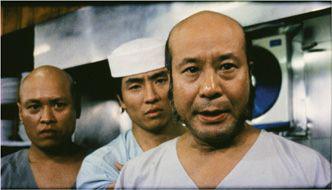
6.18 … confront the enraged cook and his assistants. The key characters are made prominent by being placed in the same area of each shot.
Editing need not be graphically continuous. Mildly discontinuous editing may appear in widescreen compositions organized around characters facing one another. A scene from Quentin Tarantino’s
Pulp Fiction
places the two hitmen opposite each other in a restaurant booth, each framed distinctly off-center
(
6.19
,
6.20
).
Compared to the
Tampopo
example, the cut here creates greater graphic discontinuity. Note, however, that the cut does balance the frame area from shot to shot: each man fills the space left empty in the previous shot. In addition, each man’s face is just above the horizontal center of each frame, so that the spectator’s eye can easily adjust to the changing composition.
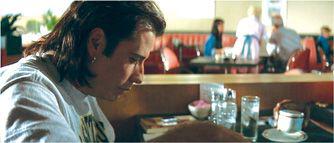
6.19 As Tarantino cuts between Vincent and …
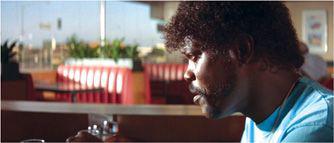
6.20 … Jules, our eye must move back and forth across the screen.
Graphically discontinuous editing can be more noticeable. Orson Welles frequently sought a clash from shot to shot, as in
Citizen Kane
when the dark long shot of Kane’s bedroom is followed by the bright opening title of the “News on the March” reel. Similarly, in
Touch of Evil,
Welles dissolves from a shot of Menzies looking out a window on frame right
(
6.21
)
to a shot of Susan Vargas looking out a different window on frame left
(
6.22
).
The clash is further accentuated by the contrasting screen positions of the window reflections. Alain Resnais’s
Night and Fog
began something of a fad by utilizing an extreme but apt graphic conflict: color footage of an abandoned concentration camp today is cut together with black-and-white newsreel shots of the camps in the period 1942–1945. Resnais balanced the color/black-and-white contrasts by finding striking similarities in shape, as when a tracking shot of fence posts graphically matches a low-angle shot of marching Nazi legs.
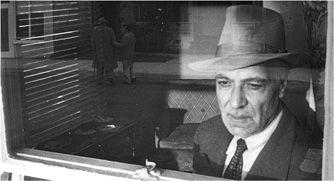
6.21
Touch of Evil:
graphic discontinuity.
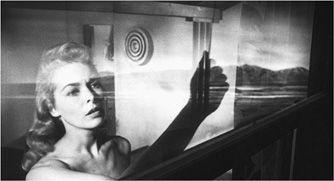
6.22
Touch of Evil.
Later in the
Birds
sequence, Hitchcock employs conflict of graphic qualities. Gasoline spurting from the pump has flowed across the street to a parking lot, and Melanie, along with several other people at the restaurant window, has seen a man accidentally set the gasoline alight. His car ignites, and an explosion of flame engulfs him. What we see next is Melanie watching helplessly as the flame races along the trail of gas toward the station. Hitchcock cuts the shots as shown in
6.23
–
6.33
:
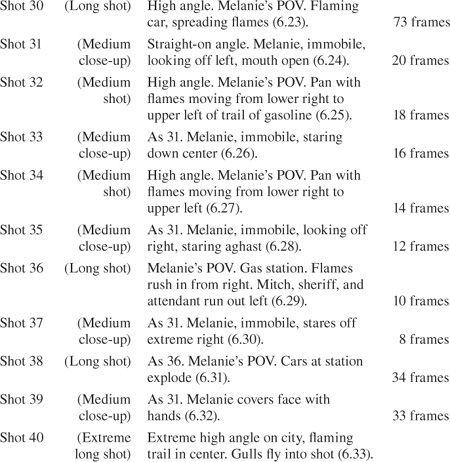
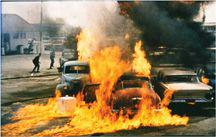
6.23
The Birds:
shot 30.
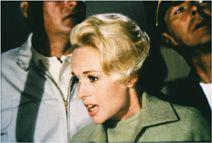
6.24
The Birds:
shot 31.
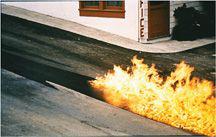
6.25
The Birds:
shot 32.
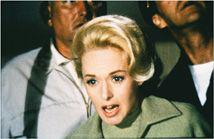
6.26
The Birds:
shot 33.
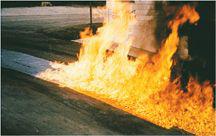
6.27
The Birds:
shot 34.
